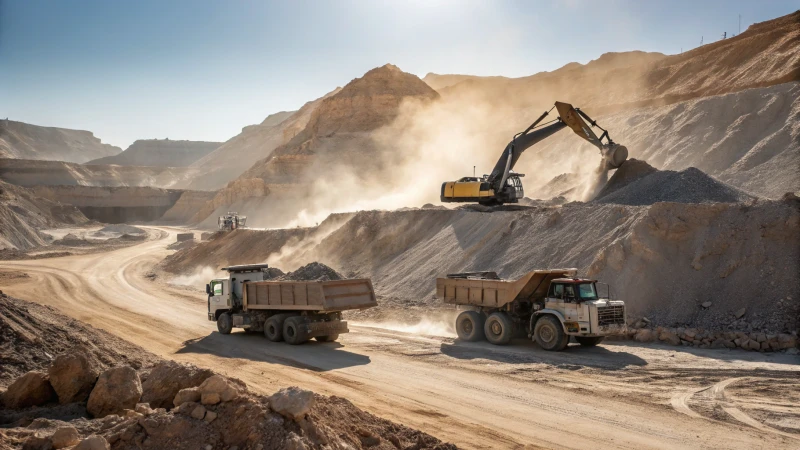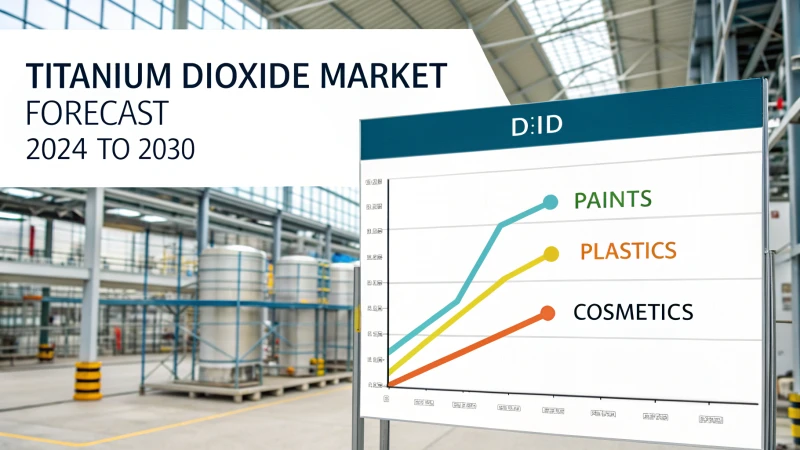
Ever wondered what’s really going on in the titanium dioxide (TiO₂) market? It’s a bit like trying to balance on a seesaw—sometimes it feels like there’s too much, and other times not enough.
As of late 2024, the TiO₂ market leans towards an oversupply, with production reaching 7.5–8.0 million metric tons while demand is around 6.5–6.8 million metric tons. This creates excess capacity, though regional variations can result in local shortages.
I remember standing in my office, staring at the spreadsheets, trying to wrap my head around these numbers. It seemed straightforward—more supply than demand should mean prices go down. But just like life, it’s never that simple. Regional differences, environmental rules, and new market demands add layers of complexity.
In regions like China, for instance, environmental crackdowns can suddenly pull plants offline, causing unexpected supply dips. Meanwhile, in places like North America, any economic hiccup could flip the switch from high demand to oversupply overnight. And don’t even get me started on how emerging markets can turn things on their head.
Understanding these nuances is key for someone like Timothy, my client from Turkey, who’s always juggling cost and quality. His story is one of many that highlight how intricate the TiO₂ market truly is. Each player’s unique needs and constraints paint a vivid picture of a market that is as dynamic as it is challenging.
[claim claim=”The TiO₂ market has an oversupply globally in late 2024.” istrue=”true” explanation=”Global production exceeds demand by approximately 1 million metric tons.”]
[claim claim=”Regional shortages in the TiO₂ market are due to environmental regulations.” istrue=”true” explanation=”Local policies can restrict production, causing regional supply imbalances.”]
What Drives Global Demand for TiO₂?
As I navigated the vibrant world of titanium dioxide (TiO₂), I discovered the fascinating forces driving its global demand. Each factor tells a story of growth and innovation.
Global demand for titanium dioxide (TiO₂) is primarily driven by construction growth, increasing use in plastics and cosmetics, and emerging technological applications. Economic trends, regulations, and advancements in technology further shape these dynamics.

I remember my first deep dive into the world of TiO₂—standing in awe at a bustling construction site. The sheer scale of infrastructure projects in places like India and Southeast Asia opened my eyes to the crucial role TiO₂ plays in paints and coatings. Rapid urbanization here is like watching a city spring to life, fueling demand as new buildings rise against the sky.
Construction and Infrastructure Growth
The construction industry is a significant consumer of TiO₂, particularly in paints and coatings. Rapid urbanization in emerging economies1 such as India and Southeast Asia drives demand, as infrastructure projects expand to meet urban needs.
Increased construction activity boosts the consumption of high-quality paints for aesthetic and protective purposes, contributing substantially to TiO₂ demand.
| Region | Demand Growth Rate |
|---|---|
| North America | Stable |
| Europe | Slow |
| Asia Pacific | Rapid |
Another vivid memory involves watching plastic packaging innovations unfold at an industry expo. Seeing TiO₂ being used for its opacity and UV protection properties, I realized just how integral it is to everyday products.
Rising Plastics and Cosmetics Use
Plastics are another major sector where TiO₂ is utilized, especially in packaging materials. The growing emphasis on sustainability has led to innovations in plastics manufacturing, using TiO₂ for its opacity and UV protection properties.
In cosmetics, TiO₂ serves as a pigment and a UV filter, enhancing products’ quality and safety. This dual role makes it indispensable in cosmetic formulations2.
Then there are the thrilling advancements in technology. It’s like being on the frontier of innovation where TiO₂ is not just a pigment but a catalyst for change, seen in air purification systems and self-cleaning materials.
Technological Advancements and New Applications
Innovations in TiO₂ applications, such as photocatalysis for air purification and self-cleaning materials, are expanding its market. These advanced uses present new opportunities in environmental protection and smart material technology3.
As technology progresses, the potential applications for TiO₂ broaden, driving further demand.
Economic conditions act like the pulse of this industry. When economies thrive, it’s like a surge of energy boosting TiO₂ use across sectors, from automotive to construction.
Economic Conditions and Regulatory Influences
Global economic health significantly impacts TiO₂ demand. In times of economic growth, industries such as automotive and construction thrive, increasing TiO₂ usage. Conversely, economic slowdowns can dampen demand due to reduced industrial activity.
Regulatory changes, especially environmental regulations in regions like China and the EU, influence production processes and capacities, indirectly affecting global market dynamics4.
Each of these factors paints a vivid picture of why TiO₂ is in such high demand globally. It’s not just about supply and demand; it’s about the stories of innovation, growth, and adaptation that keep this market alive.
[claim claim=”TiO₂ demand in Asia Pacific is growing rapidly.” istrue=”true” explanation=”Rapid urbanization and infrastructure projects in Asia Pacific drive TiO₂ demand.”]
[claim claim=”TiO₂ is not used in cosmetics for UV protection.” istrue=”false” explanation=”TiO₂ is used in cosmetics as a pigment and UV filter, enhancing safety.”]
How do regional differences affect TiO₂ supply and demand?
Ever wonder how the ebb and flow of titanium dioxide (TiO₂) across the globe can impact your business? Let me take you on a journey through the intricate dance of supply and demand that shapes this vital industry.
Regional differences in TiO₂ supply and demand are shaped by production capacities, environmental regulations, and consumption trends. Major players like China and the U.S. influence global supply chains, while emerging markets fuel demand growth, each region adding its unique flavor to the global market.

Regional Production Capacities
Let’s dive into the world of regional production capacities, where China stands as a giant. With nearly 50% of global TiO₂ production under its belt, thanks to its large-scale, efficient plants, China leads the charge. I remember chatting with a colleague who described visiting one of these Chinese facilities5—it’s like witnessing a symphony of machinery perfectly attuned to market demands. In contrast, producers in North America and Europe are like tightrope walkers, balancing near-capacity operations while being incredibly sensitive to economic shifts.
| Region | Key Producers | Production Process |
|---|---|---|
| China | Coastal facilities | Chloride & Sulfate |
| North America | Chemours, Tronox | Chloride |
| Europe | Venator, Kronos | Chloride |
Regulatory Impact on Supply
Regulations are like the unsung referees in the TiO₂ game. China’s environmental standards6 can be as unpredictable as the weather—one minute they’re tightening controls, and next, production capacities dip because of stricter wastewater regulations. I’ve heard tales of European producers grappling with high compliance costs for emissions, which inevitably nudge production volumes down.
Consumption Patterns and Demand Growth
Emerging markets are where the excitement really kicks in. Countries like India and Southeast Asia are seeing a boom in TiO₂ demand due to burgeoning infrastructure and consumer goods consumption. It’s like watching a thrilling race where these regions rely heavily on imports—any hiccup in logistics or trade can turn surpluses into sudden shortages.
| Market | Demand Drivers | Import Reliance |
|---|---|---|
| India | Construction, Consumer Goods | High |
| Southeast Asia | Infrastructure, Electronics | High |
Geopolitical and Economic Influences
Navigating through the twists and turns of trade policies is crucial. For instance, China’s tariffs or export restrictions can ripple across importing regions, causing local shortages despite an apparent global surplus. I often think of it as trying to solve a puzzle where each piece is affected by economic slowdowns in mature markets like the U.S., which can quickly tip the balance from perfect harmony to oversupply chaos.
Understanding these regional dynamics helps businesses like paint manufacturers to strategize their sourcing and pricing models effectively. By keeping an eye on these factors, companies can better navigate the complex landscape of TiO₂ supply and demand.
For further exploration on how these factors interplay with pricing strategies and economic conditions, see our sections on price stability7 and economic impact8.
[claim claim=”China produces nearly 50% of global TiO₂ capacity.” istrue=”true” explanation=”China’s investment in efficient plants allows it to dominate production.”]
[claim claim=”European TiO₂ producers face low emissions compliance costs.” istrue=”false” explanation=”European producers incur high costs for emissions compliance, affecting output.”]
How Do Environmental Regulations Influence TiO₂ Production?
Ever wondered how those tiny particles in your sunscreen or the bright white paint on your walls are produced? Dive into the fascinating world of TiO₂ production and discover how environmental regulations shape this industry.
Environmental regulations impact TiO₂ production by enforcing stricter controls on emissions and waste management, leading to higher costs and potentially limiting production capacity, which can affect global supply and pricing.

Emission Control Standards
Thinking back, I remember the first time I walked into a TiO₂ plant—it was like stepping into a whole new world. The hum of machinery, the workers in safety gear, and the sheer scale of it all were overwhelming. But as I learned more, it became clear just how much environmental regulations influence every step of the process. In countries like China and the EU, the rules around emissions are so tight that plants have to invest heavily in advanced filtration systems. I once spoke to a plant manager who said these upgrades felt like renovating a house while living in it—necessary but disruptive, often leading to temporary shutdowns that reduce available capacity9.
Table: Emission Reduction Investments
| Region | Average Cost Increase (%) | Compliance Technology |
|---|---|---|
| China | 15-20% | Advanced filtration |
| European Union | 10-15% | Low-emission technologies |
Waste Acid Treatment
I recall a visit to another facility where the conversation turned to waste management. It’s not just about getting rid of waste; it’s about doing it safely and sustainably. Both chloride and sulfate processes generate waste acid, and the regulations for disposal or recycling can be daunting. One engineer joked that dealing with waste acid is like trying to clean up after a never-ending party—the work never stops. Some plants have installed acid recovery units, but these come with their own challenges, like increased maintenance and potential downtime.
Market and Production Adjustments
Sometimes, I feel like I’m watching a delicate dance when I see how manufacturers adjust production volumes to manage costs. Compliance isn’t cheap, and when demand softens, producers often cut back on production to stay afloat. I remember chatting with a friend at Chemours who mentioned that these adjustments are like tightening your belt when you’re dieting—necessary but not always easy. These changes can help stabilize prices but might also lead to regional supply imbalances.
Regional Discrepancies in Regulatory Impact
China
In China, environmental crackdowns are as regular as clockwork. Inefficient plants often get shut down, especially those using the sulfate-process10. However, modern chloride-process plants have picked up some slack, preventing too much strain on supply.
North America & Europe
Meanwhile, in the U.S. and Europe, major producers keep things running close to maximum capacity due to steady demand. But I’ve seen firsthand how an economic downturn can quickly turn this balance on its head, leading to potential oversupply issues.
Emerging Market Challenges
In places like Southeast Asia and Latin America, the demand for TiO₂ is skyrocketing. These regions often rely on imports from countries with stricter environmental laws which can complicate logistics and increase costs—a bit like trying to order a popular gadget online during the holiday season—demand is high, and patience is key.
Grasping the balance between compliance costs and production efficiency is crucial for anyone involved in the TiO₂ industry. As environmental regulations continue to evolve, they will undoubtedly shape the future landscape of TiO₂ manufacturing globally.
[claim claim=”Emission control increases TiO₂ production costs by 20%.” istrue=”true” explanation=”Regulations in China increase costs by 15-20% due to filtration upgrades.”]
[claim claim=”All TiO₂ plants in the EU must use sulfate-process technology.” istrue=”false” explanation=”EU plants use both sulfate and chloride processes, not just sulfate.”]
How do raw material constraints affect the TiO₂ market?
Ever wondered how something as seemingly mundane as raw materials can shake up an entire market? Let’s dive into the world of titanium dioxide and see how these constraints ripple through supply chains.
Raw material constraints in the TiO₂ market lead to production cost fluctuations, supply disruptions, and pricing volatility. Limited access to ilmenite and rutile, essential for TiO₂ production, often triggers these challenges.

Key Raw Materials: Ilmenite and Rutile
Ilmenite and rutile aren’t just names on a periodic table; they’re the backbone of TiO₂ production. I remember a time when our supply chain was disrupted due to a mining issue in Mozambique11. Suddenly, what seemed abundant became as scarce as a rainstorm in the Sahara. It’s like planning a big family barbecue and then realizing there’s no charcoal to be found anywhere.
Table: Key Raw Material Availability
| Material | Major Sources | Supply Stability |
|---|---|---|
| Ilmenite | Australia, South Africa | High, but variable |
| Rutile | Australia, Sierra Leone | Low, high price volatility |
Impact on Production Costs
Imagine you’re running a marathon, and halfway through, your shoes start falling apart. That’s what it feels like when ilmenite prices spike unexpectedly—it can really throw off a manufacturer’s game. Especially in the chloride process, which guzzles high-grade rutile like it’s fuel for a race car. Any hiccup in supply can feel like a slap in the face, leaving production volumes hanging in the balance.
Geopolitical Influences
The thing about trade policies is they’re as unpredictable as a toddler’s mood swings. I’ve seen how tariffs on Chinese TiO₂ can make local markets feel like they’re playing musical chairs—except there aren’t enough chairs to go around. These geopolitical twists and turns often lead to price disparities that can leave you feeling dizzy.
Environmental Regulations and Market Dynamics
It’s like trying to run a tightrope with weights strapped to your ankles when environmental regulations tighten. In regions like China and the EU, these rules can clamp down on capacity, preventing oversupply and keeping the market teetering on a tightrope between supply and demand.
Regional Discrepancies in TiO₂ Availability
Global capacity might suggest surplus, but trust me, localized shortages pop up like potholes in a busy street. I’ve learned that emerging markets such as India12 are especially vulnerable to these bumps, heavily relying on imports from major players. One little hiccup in logistics or regulations can make the difference between smooth sailing and scrambling for solutions.
Understanding these dynamics isn’t just about numbers; it’s about navigating a landscape where each move can ripple through my business. Exploring external resources further helps me grasp these complexities and adapt strategically to market shifts.
[claim claim=”Ilmenite is abundant and stable in supply.” istrue=”false” explanation=”Ilmenite supply is high but variable due to mining conditions.”]
[claim claim=”Rutile has lower price volatility than ilmenite.” istrue=”false” explanation=”Rutile commands higher price volatility due to its rarity.”]
Conclusion
The TiO₂ market is currently oversupplied, with production exceeding demand. Regional variations and environmental regulations create complexities, impacting pricing and availability across different markets.
-
Explore how urbanization in emerging markets contributes to increased TiO₂ consumption, particularly in construction. ↩
-
Learn about TiO₂’s role as a pigment and UV filter in cosmetics, enhancing product quality. ↩
-
Discover new technological applications of TiO₂ like photocatalysis for environmental benefits. ↩
-
Understand how regulatory changes affect TiO₂ production and global market trends. ↩
-
Explore how China’s investment in efficient TiO₂ facilities impacts global supply chains. ↩
-
Discover how environmental regulations in China affect TiO₂ production capacity. ↩
-
Learn about factors contributing to TiO₂ price stability across different markets. ↩
-
Understand how economic conditions influence the balance between TiO₂ supply and demand. ↩
-
Discover how environmental regulations limit production capacity and affect global supply dynamics. ↩
-
Learn about specific standards for controlling emissions in sulfate-process TiO₂ plants, essential for understanding regulatory impacts. ↩
-
Discover the latest mining conditions affecting ilmenite production in Australia to understand supply stability. ↩
-
Explore how India’s dependence on imports influences local TiO₂ availability and market strategies. ↩





